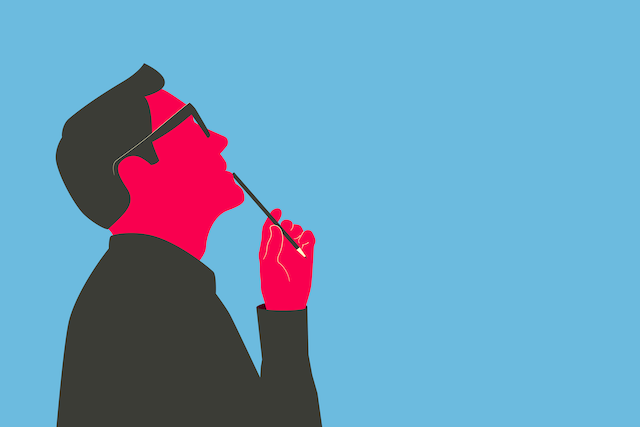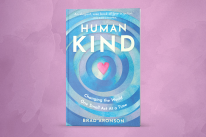
“Your brain can play tricks, your heart can be blind, but your gut is always right.” ~Rachel Wolchin
Have you ever wondered why it can feel so incredibly difficult to make a decision? The pros and cons lists, the endless stream of thoughts talking us into it and then against it, the anxiety about potential disappointment, doing it wrong, or regretting it can leave us paralyzed with self-doubt.
I can very much relate to this cycle. In the past, I had extreme difficulty making decisions. I would become completely obsessed with all aspects of the process, seeking to talk it out with anyone that would listen and write list after list on what direction would be best.
I eventually realized that my “process” wasn’t working. I ended up only increasing my confusion and self-doubt. The more I talked about the different options and sought others’ opinions, the less clarity I had, which then sent me out to involve even more people in the process. This was a cycle that became endless and maddening for those closest to me.
I had read about accessing my intuition, which was supposedly there to guide me, yet I still didn’t know how to tap into this alleged “whisper” that already knew the answer. How exactly was I supposed to find it, hear it, and apply it? I assumed no one else had this problem as badly as I did and that it would require years of self-exploration to fix it.
When we have difficulty tapping into our intuition and trusting in ourselves, the “how” of it all can feel overwhelming.
I am happy to share that tapping into this part of myself did not require years of self-exploration but rather a willingness and openness to exit my conscious mind—the thinking part of myself—and explore my subconscious—the emotional and feeling part of myself. As I learned how to deeply relax and soothe this deeper part of myself, clarity became natural.
Three Ways to Access Your Intuition
1. Giving Our Mind Permission
We can feel extreme resistance around connecting to our body when we’re stressed or feeling anxious to figure something out. We want to stay in our heads and solve it logically, not allowing ourselves to abandon the problem for even a few minutes. We don’t realize this only creates more indecisiveness and stress, raising our cortisol levels, which impacts our ability to think clearly.
Important decisions are made through accessing faith within ourselves, where our mind and body connect in harmony. Like so many matters of the heart, this can feel very counterintuitive.
The more deeply we can relax, the more powerful our mind will be to gain clarity and make the right decision.
This can look like talking to our conscious mind, letting it know we’re working on things: “I’m working on it; this is how I will give you the clarity you’re asking for.” This gives us permission to exit our head, lowering the resistance we are feeling. We assure the mind we’re not going to abandon it forever, but just for right now. We will be returning. This quiets the chatter we’re hardwired to have on a continuous thought loop.
If permission doesn’t enable you to calm your mind and access your intuition, it can help to get out in nature, channel your excess energy into a creative project, or simply practice stillness in the chaos of it all. This helps us get past the impulse to “do” something out of fear and worry. Exiting our reasoning mind and connecting to this deeper part of ourselves allows the emotional waves to pass and for clarity to come.
2. Identifying What We’re Feeling
Building trust and faith in ourselves starts with connecting to our body and what we’re feeling. Where are we holding tension or feeling sensations related to the outside stress within us? What does it feel like? Where does it feel lighter or heavier?
As we practice exiting our thinking mind, we’ll feel different sensations as we further relax into what we want and allow it to come in. The distinctions may feel extremely subtle at first, yet as we deepen our awareness through the relaxation, we’ll start to identify nuances within our choices that will guide us to the one that is most in alignment with what we want. We want to stay open and note any gentle intuitive nudges in one direction over the other.
I once had to make a hard decision about my oldest son’s schooling that brought up all kinds of mixed emotions. My husband and I agreed early on to transfer him to a bigger school for elementary, as his current school was very small, and we wanted him to have a different classroom experience with his teachers and peers.
I have a hard time with endings, and while knowing this about myself, my emotions still wanted to take over. A decision that, in the big scheme of things, that didn’t need to feel so stressful was activating old pain points in me.
I started to become a first grader myself again when my parents made decisions that felt like hard transitions. I didn’t want him to feel unheard, unsupported, or angry. I realized I was caught up in my own triggers, my own experience, and completely letting fear and worry take over.
I felt deeply conflicted and fearful of making the wrong decision for my son, yet I knew the answer wouldn’t come from talking it out.
I practiced visualizing a pendulum and paid close attention to which way it was slightly drifting. Was it leaning a little closer to yes or no? When facing similar feelings of uncertainty, I still love to close my eyes and notice if the pendulum is swinging a little more right or left and explore that direction a little more.
3. Evoking Curiosity
Evoking curiosity allows us to discern between whether we’re reacting versus responding to the issue.
Curiosity allows us to be right where we are in the moment without judging ourselves for being indecisive or for not knowing the answer right away.
For example, as I chose to get curious and compassionate with myself rather than closed off and frustrated when I felt like I couldn’t come to a decision for my son, I was able to go deeper into the “why” of what I wanted.
As I leaned into each scenario, remembering what was discussed when calm and fully in my conscious mind, I started to feel a subtle, yet distinct difference when I relaxed into each choice.
I was able to observe myself getting caught up in short-term fears such as how I would be viewed by the school we were leaving, what would the other families think, and what if I regretted it and went crawling back in six months?
I’ve learned that the compulsion to project out into the future and let worry take over was endless, and that it cut me off from the joys of starting a new chapter for him filled with new possibilities.
I started to differentiate between my intuition versus my ego’s need to have a constant issue or problem requiring my full attention. I’ve also learned through this practice to listen to myself, paying attention to these differences, and to have faith in myself.
I was then able to choose the option that most clearly aligned with my “why.” I was able to see how fear was paralyzing me from making a decision and how my “why” for wanting to pursue other choices was valid and there for a reason!
Curiosity allows us to explore our options with ourselves in an open, nonjudgmental, compassionate way so we can then respond from a place of clarity instead of reacting quickly and emotionally.
To evoke your curiosity, ask yourself: What are the reasons you want or don’t want it? Are your reasons legitimate? What is the thinking process behind what you want? Is it reactionary? What needs to be done to truly own this decision?
As we continue to ask questions, we soothe the subconscious part of ourselves that is scared, agitated, and anxious, and stop triggered emotions from taking over and leading.
We can give ourselves permission to put the fear away by asking ourselves, “What would I want to do if I weren’t scared?”
This allows the conscious part of us to step in and make decisions, managing the reactions coming up that are deeply rooted in our subconscious, our childhood, past triggers, and past disappointments.
When we awaken this connection within us, we begin to identify deeply with what we need now, rather than the unmet needs of our past.
With practice and patience, I am confident decision-making will feel like a completely different experience, turning what once felt impossible into a deeper way of connecting and knowing ourselves.
About Jen Michelle
Jen Michelle is a LCSW (Licensed Clinical Social Worker) and Certified Love and Relationship coach. She is passionate about helping you become your most authentic self to have the type of deep connection you desire with others. You can find more of Jen’s work on her website at jenmichellecoaching.com and download her free report “How To Get Your Love Life Back On Track.” You can also find Jen on Facebook, Instagram, LinkedIn, and Pinterest.













 Though I run this site, it is not mine. It's ours. It's not about me. It's about us. Your stories and your wisdom are just as meaningful as mine.
Though I run this site, it is not mine. It's ours. It's not about me. It's about us. Your stories and your wisdom are just as meaningful as mine. 